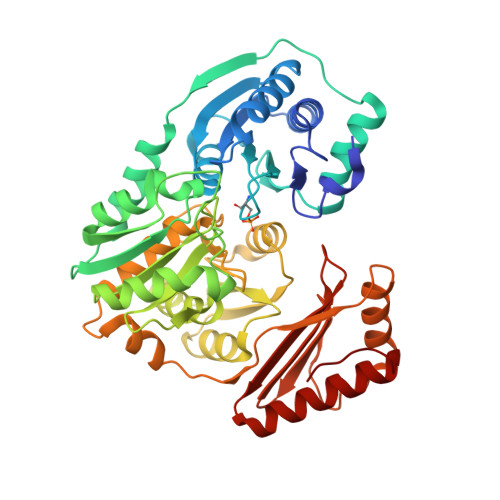The reaction of phosphohexomutase from Pseudomonas aeruginosa: structural insights into a simple processive enzyme.
Regni, C., Schramm, A.M., Beamer, L.J.(2006) J Biological Chem 281: 15564-15571
- PubMed: 16595672
- DOI: https://doi.org/10.1074/jbc.M600590200
- Primary Citation of Related Structures:
2FKF, 2FKM - PubMed Abstract:
The enzyme phosphomannomutase/phosphoglucomutase (PMM/PGM) from Pseudomonas aeruginosa catalyzes the reversible conversion of 1-phospho to 6-phospho-sugars. The reaction entails two phosphoryl transfers, with an intervening 180 degrees reorientation of the reaction intermediate (e.g. glucose 1,6-bisphosphate) during catalysis. Reorientation of the intermediate occurs without dissociation from the active site of the enzyme and is, thus, a simple example of processivity, as defined by multiple rounds of catalysis without release of substrate. Structural characterization of two PMM/PGM-intermediate complexes with glucose 1,6-bisphosphate provides new insights into the reaction catalyzed by the enzyme, including the reorientation of the intermediate. Kinetic analyses of site-directed mutants prompted by the structural studies reveal active site residues critical for maintaining association with glucose 1,6-bisphosphate during its unique dynamic reorientation in the active site of PMM/PGM.
- Department of Biochemistry, University of Missouri, Columbia, Missouri 65211, USA.
Organizational Affiliation:



















